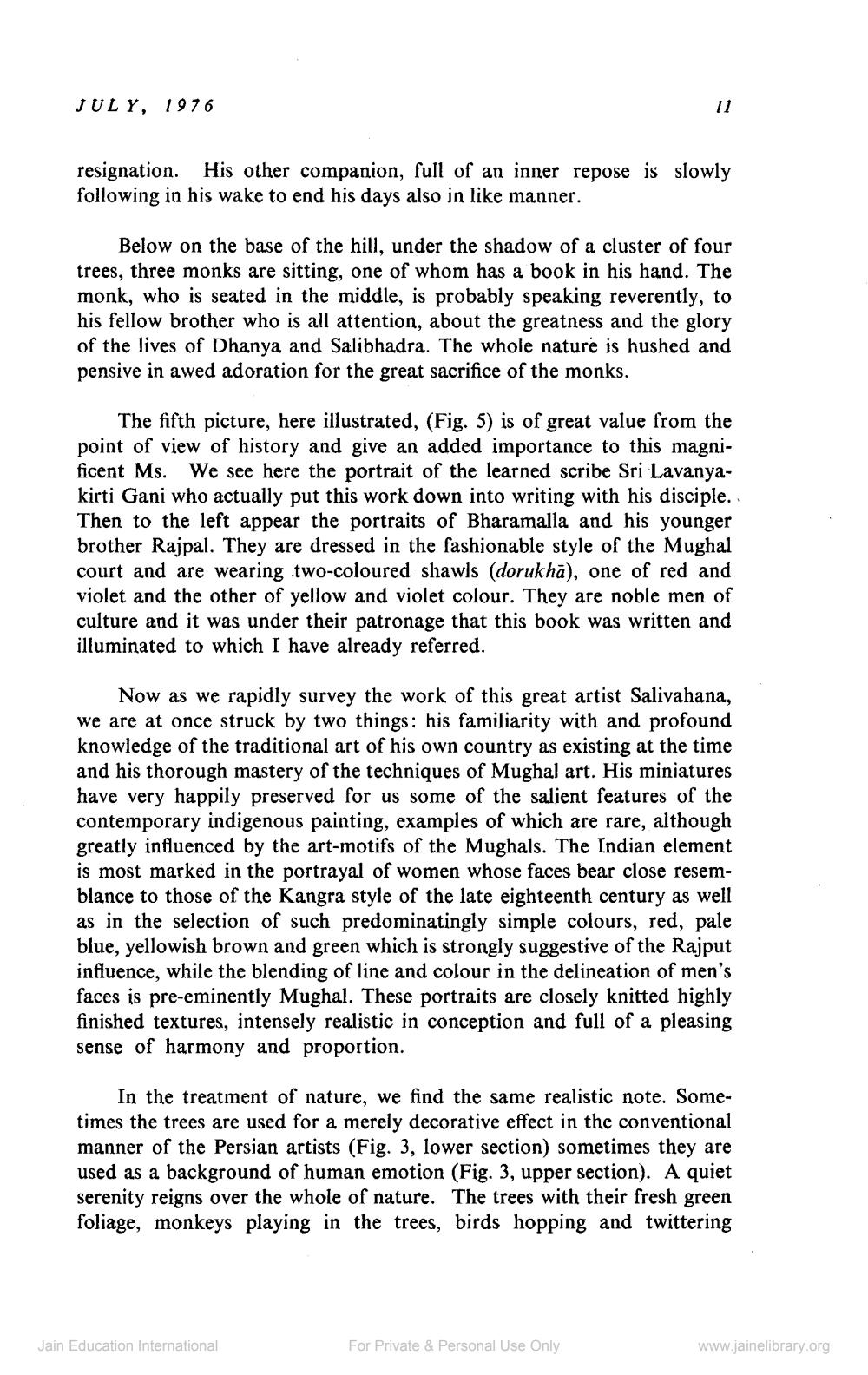________________
JULY, 1976
resignation. His other companion, full of an inner repose is slowly following in his wake to end his days also in like manner.
11
Below on the base of the hill, under the shadow of a cluster of four trees, three monks are sitting, one of whom has a book in his hand. The monk, who is seated in the middle, is probably speaking reverently, to his fellow brother who is all attention, about the greatness and the glory of the lives of Dhanya and Salibhadra. The whole nature is hushed and pensive in awed adoration for the great sacrifice of the monks.
The fifth picture, here illustrated, (Fig. 5) is of great value from the point of view of history and give an added importance to this magnificent Ms. We see here the portrait of the learned scribe Sri Lavanyakirti Gani who actually put this work down into writing with his disciple.. Then to the left appear the portraits of Bharamalla and his younger brother Rajpal. They are dressed in the fashionable style of the Mughal court and are wearing two-coloured shawls (dorukhā), one of red and violet and the other of yellow and violet colour. They are noble men of culture and it was under their patronage that this book was written and illuminated to which I have already referred.
Now as we rapidly survey the work of this great artist Salivahana, we are at once struck by two things: his familiarity with and profound knowledge of the traditional art of his own country as existing at the time and his thorough mastery of the techniques of Mughal art. His miniatures have very happily preserved for us some of the salient features of the contemporary indigenous painting, examples of which are rare, although greatly influenced by the art-motifs of the Mughals. The Indian element is most marked in the portrayal of women whose faces bear close resemblance to those of the Kangra style of the late eighteenth century as well as in the selection of such predominatingly simple colours, red, pale blue, yellowish brown and green which is strongly suggestive of the Rajput influence, while the blending of line and colour in the delineation of men's faces is pre-eminently Mughal. These portraits are closely knitted highly finished textures, intensely realistic in conception and full of a pleasing sense of harmony and proportion.
In the treatment of nature, we find the same realistic note. Sometimes the trees are used for a merely decorative effect in the conventional manner of the Persian artists (Fig. 3, lower section) sometimes they are used as a background of human emotion (Fig. 3, upper section). A quiet serenity reigns over the whole of nature. The trees with their fresh green foliage, monkeys playing in the trees, birds hopping and twittering
Jain Education International
For Private & Personal Use Only
www.jainelibrary.org




